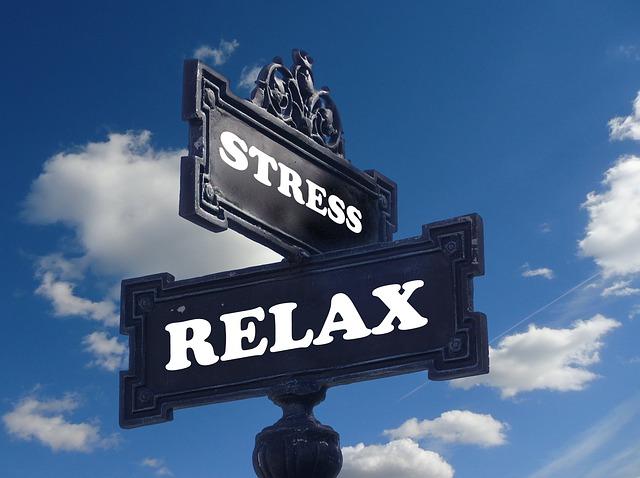The Nature of Stress in British Columbia
Common Causes of Stress among Residents
Key causes of stress identified by occupational therapists in the region include:
- Workplace Stress: The competitive job market, high cost of living, and demand for productivity in BC can contribute to workplace stress. This includes long working hours, job insecurity, and work-life imbalance.
- Lifestyle Factors: The fast-paced urban lifestyle, particularly in cities like Vancouver, can be a significant stressor. conditions, such as extended rainy seasons in coastal areas, can affect mood and stress levels.
Statistical Data on Stress-Related Health Issues
- Prevalence of Stress-Related Disorders: Statistics from healthcare providers and surveys in BC indicate a high prevalence of stress-related disorders such as anxiety and depression.
- Impact on Physical Health: Data shows a correlation between chronic stress and physical health issues like hypertension, heart disease, and weakened immune systems, prevalent in the BC population.
The Impact of the Pandemic and Other Recent Events
- Pandemic-Related Stress: The COVID-19 pandemic has significantly impacted mental health, with increases in stress, anxiety, and depression reported. Occupational therapists note the compounding effect of social isolation, economic uncertainty, and health fears.
- Recent Social and Economic Events: Other events, such as economic downturns, housing crises, and social unrest, have contributed to heightened stress levels among BC residents.
Ready for a positive change? Contact Logic Rehabilitation at 778-819-2453 and let our expert Occupational Therapists in Squamish, BC, guide you towards a healthier, more independent life. Call now!
Stress Management Techniques Endorsed by Occupational Therapists
Mindfulness and Relaxation Techniques: The Art of Being Present
- Mindful Breathing: Occupational therapists emphasize the power of breathing exercises. By focusing on slow, deep breaths, individuals can anchor themselves in the present moment, easing stress.
- Progressive Muscle Relaxation: This involves systematically tensing and then relaxing different muscle groups, promoting physical and mental calmness.
- Guided Imagery: Using vivid, calming images, individuals can mentally transport themselves to a place of serenity, providing a temporary escape from stressors.
Time Management and Organizational Skills: Structuring Serenity
- Prioritization Techniques: Learning to identify and focus on high-priority tasks reduces overwhelm and increases efficiency.
- Breaking Down Tasks: Dividing larger tasks into smaller, manageable steps helps in reducing the anxiety of daunting projects.
- Scheduled Downtime: Encouraging scheduled breaks and leisure time ensures a healthy work-life balance, crucial for stress management.
Physical Activities and Exercises: Movement as Medicine
- Regular Exercise Routines: Even moderate physical activities like walking or swimming can significantly reduce stress levels by releasing endorphins, the body’s natural mood lifters.
- Outdoor Activities: Engaging in outdoor activities like hiking or cycling offers the dual benefits of exercise and connecting with nature, a known stress reliever.
Creative and Recreational Therapies: The Healing Power of Creativity
- Art Therapy: Drawing, painting, or sculpting can be therapeutic, providing a non-verbal outlet for emotions and stress.
- Music and Dance Therapy: These forms of therapy use rhythm and melody to help individuals express themselves and find relaxation.
- Gardening or Cooking: Activities like gardening or cooking are not only productive but also provide a sense of calm and achievement.
Environmental Modification for Stress Reduction: Creating a Haven of Calm
- Ergonomic Workspaces: An ergonomically designed workspace reduces physical strain and indirectly lowers stress.
- Soothing Decor: Incorporating elements like plants, soft lighting, or calming colors can transform a space into a stress-reducing environment.
- Organization and Clutter Reduction: A well-organized and clutter-free environment can significantly reduce anxiety and improve focus.
Tailored Strategies for Different Groups
Strategies for Working Professionals: Balancing the Scales
- Work-Life Integration: Teaching professionals to set boundaries between work and personal life, encouraging flexible work schedules where possible.
- Stress-Reduction Workshops: Implementing workshops that focus on time management, delegation, and coping mechanisms specific to workplace stress.
- Case Study: A tech company in Vancouver introduced lunchtime yoga sessions and saw a marked decrease in reported stress levels and an increase in productivity.
Strategies for Students: Navigating Academic Pressure
- Mindfulness in Schools: Implementing mindfulness and relaxation techniques in school curriculums to help students manage academic stress.
- Study-Life Balance: Encouraging students to engage in extracurricular activities and hobbies that provide a break from academic pressures.
- Case Study: A university in BC introduced a peer mentorship program for first-year students, significantly reducing stress and improving academic performance among participants.
Strategies for Seniors: Embracing Tranquil Aging
- Community Engagement: Encouraging participation in community groups and activities to combat feelings of isolation and loneliness.
- Physical Activity Programs: Tailored exercise programs that cater to seniors’ abilities, focusing on maintaining mobility and reducing stress.
- Case Study: A senior center in Kelowna implemented a weekly group gardening project, leading to improved mental well-being and reduced stress levels among participants.
Addressing Unique Stressors in Diverse Communities
- Cultural Sensitivity Training: Educating therapists on the unique stressors faced by different cultural communities in BC.
- Language and Communication: Providing resources and counseling in multiple languages to ensure accessibility and inclusivity.
Integrating Occupational Therapy into Daily Life
Practical Tips for Daily Incorporation of Occupational Therapy Techniques
- Mindful Breaks: Incorporate short, mindful breaks into the day. This could be a brief meditation session, deep breathing exercises, or simply stepping away from the desk for a few minutes.
- Routine Exercise: Embed physical activities into daily routines, such as a morning stretch, a walk during lunch breaks, or yoga before bedtime.
- Creative Outlets: Allocate time for creative activities like painting, journaling, or playing a musical instrument, which serve as therapeutic outlets for stress.
The Role of Self-Care and Maintaining a Work-Life Balance
- Self-Care Practices: Encourage regular self-care practices, such as reading, taking warm baths, or engaging in hobbies, to relax and recharge.
- Setting Boundaries: Stress the importance of setting clear boundaries between work and personal life, including disconnecting from work emails or calls during personal time.
- Regular Check-ins: Promote the habit of regular self-reflection and check-ins to monitor stress levels and overall well-being.

